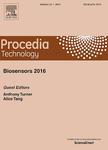版权所有:内蒙古大学图书馆 技术提供:维普资讯• 智图
内蒙古自治区呼和浩特市赛罕区大学西街235号 邮编: 010021

作者机构:Humanoid Robot and Bio-Sensing Center Faculty of Mechanical Engineering Universiti Teknologi MARA 40450 Shah AlamMalaysia Faculty of Information Science and Technology Multimedia University Malaysia Brain and Neuroscience Communities of Research Universiti Teknologi MARA 40450 Shah Alam Malaysia Fraunhofer Project Group Mechatronic Systems Design Zukunftsmeile 1 33102 PaderbornGermany
出 版 物:《Procedia Technology》
年 卷 期:2014年第15卷
页 面:775-782页
主 题:Support vector machine track-driven robot agricultural automation intelligent technical systems
摘 要:A long-term goal of agricultural automation is to deploy intelligentrobots to facilitate labor-intensive tasks such as crop care or selective harvesting with minimum human supervision. To achieve this goal, the agricultural robots must be able to adapt themselves in response to various terrain conditions. The reason is that the terrain characteristics can jeopardize the performance of a robotin carrying out a taskor even causing it being trapped in the field. The aim of this work is to evaluate the effectiveness of using an intelligent algorithm, i.e. support vector machine (SVM) in recognizing various terrain conditions in an agricultural field. For this purpose, asmall tracked-driven mobile robot together witha terrain test bed has been developed. The terrain test bed emulates three types of terrain conditions, i.e. sand, gravel and vegetation. The tracked-driven robot is embedded with a low power MEMS accelerometer for measuring vibration signals resulted from the track-terrain interaction. An experimental study was conducted usinga SVMtrained with three different kernel functions, i.e. linear function, polynomial function and radial basis function (RBF) . The results showed that the SVM can recognize different terrain conditions effectively. This work contributes to devising a self-adaptive agricultural robot in coping with changing terrain conditions.